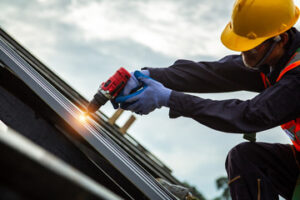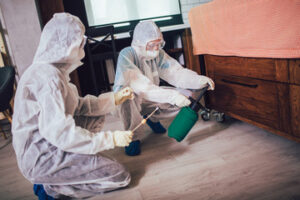Roofer Riverview installs, replaces, and repairs roofs on homes and other buildings. This is physically demanding work that often involves climbing, bending, and kneeling in various weather conditions.

People who choose to be Roofers typically have strong Realistic interests. They also tend to value Support, Independence, and Working Conditions. Skills that are important for this career include gross body equilibrium and problem sensitivity.
There are many different roofing materials on the market today. Some are based on traditional roofing options like asphalt shingles or clay tiles, while others offer modern alternatives. Some of these materials are more environmentally friendly than others, but they all offer durability and weather resistance.
One of the most popular roofing materials is a corrugated metal substrate, made of various metals including copper, zinc and aluminum. These roofs are extremely durable and aesthetically pleasing. They are also lightweight, which makes them easier to install than other roofing materials. However, they can rust over time, which requires regular maintenance and repair.
Another alternative is a PVC or polyvinyl chloride flat roofing system, which is an effective and affordable choice for commercial buildings. This material is known for its durability and resistance to fire, chemicals, ozone and extreme temperatures. Its seams are heat-welded together, which creates strong and watertight connections. This type of flat roofing is becoming increasingly popular for its energy efficiency, as it reflects the sun’s rays rather than absorbing them.
Traditionally, slate was used for roofing, and it continues to be a popular option for homes that need an elegant, long-lasting and fire-resistant material. It is harvested from natural quarries and crafted for roofing, and it offers great resistance to harsh climates. However, it is also expensive and heavy, which means that not every home can support a slate roof without structural reinforcement.
Slate is a beautiful roofing material, and it can last for more than a century. Its durability and appearance make it a popular choice for historic and high-end residential buildings. It is also fireproof and resistant to fungus, insects and bacteria. However, the process of producing slate is highly energy-intensive, which is why it tends to be more expensive than other roofing materials.
Concrete and terra-cotta tile are two other classic roofing options. Both are molded and fired for durability, and they are often associated with Mediterranean, Spanish and Southwestern-style houses. However, they can be brittle in cold weather and require substantial maintenance to prevent mold, mildew and other problems.
Inspection
Roofers inspect and evaluate the condition of roofs and related structures. They also apply materials that bind, seal or insulate surfaces. Roofing professionals look for signs of deterioration and damage, such as shingle loss, moss growth, rust, missing fasteners and other defects. They also check for roof leaks and examine interior ceilings and walls for water stains, mold or rot. They may remove snow, debris and other obstructions from roofs and set up scaffolding for safe access.
The exact inspection procedure varies slightly depending on the type of roof, but all roofers will inspect the general condition of the roof membrane. They will check for blistering, cracking, tearing or holes in the membrane, as well as abrasions. They will also check for the presence of fungus and moss, which can deteriorate the membrane and lead to leaks.
They will also examine the flashing, underlayment and sheathing to ensure they are in good condition. Depending on the type of roof, they might use a binoculars or a ladder to closely examine steep slopes and valleys for problems like buckling, leaking or loosening. Other areas of concern are the ridge vents, chimneys and skylights. The roofer will also inspect the gutters, scuppers and drains for accumulation of dirt, leaves and other material that can block positive drainage.
Every roof has its own critical areas, and a professional roofer is trained to pay special attention to these trouble spots during inspections. For example, a cupola built into the peak of a tower requires special roofing techniques to prevent leaking. Also, the area where round conical roofs intersect with other shapes, such as a dome, require special flashing that can be difficult to see with binoculars.
If a roofer detects potential issues during an inspection, they may recommend repairs or replacement of specific components. They will usually provide a written report with photographs and cost estimates. The building owner can then choose to repair or replace the roof as needed.
When a roof is in poor condition, it can reduce the lifespan of the entire structure. Regular inspections can catch many problems before they become severe and expensive, allowing the building to enjoy years of service. In addition, routine inspections after severe weather events can help reduce the number and severity of costly repairs.
